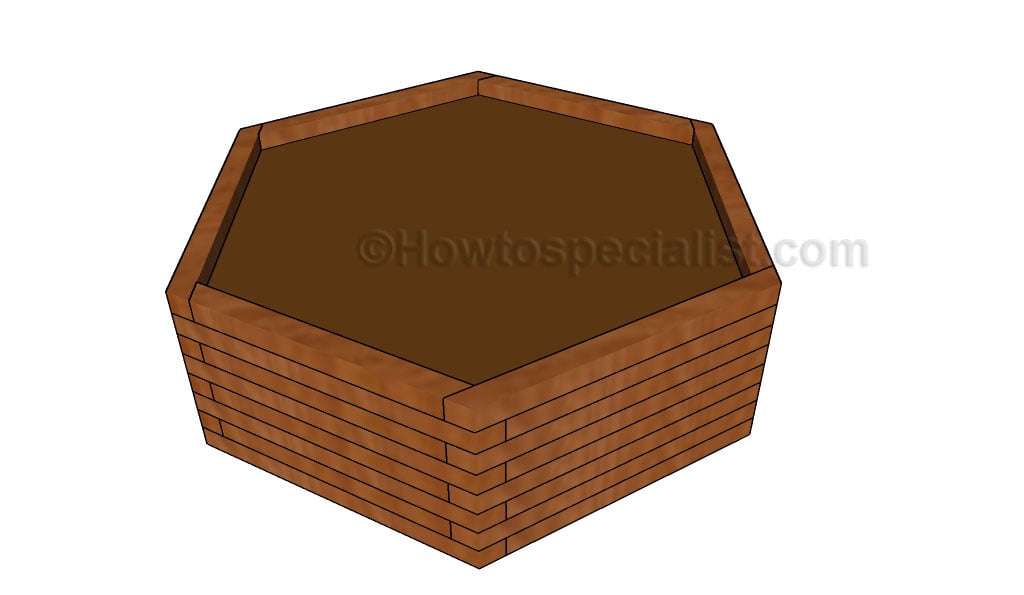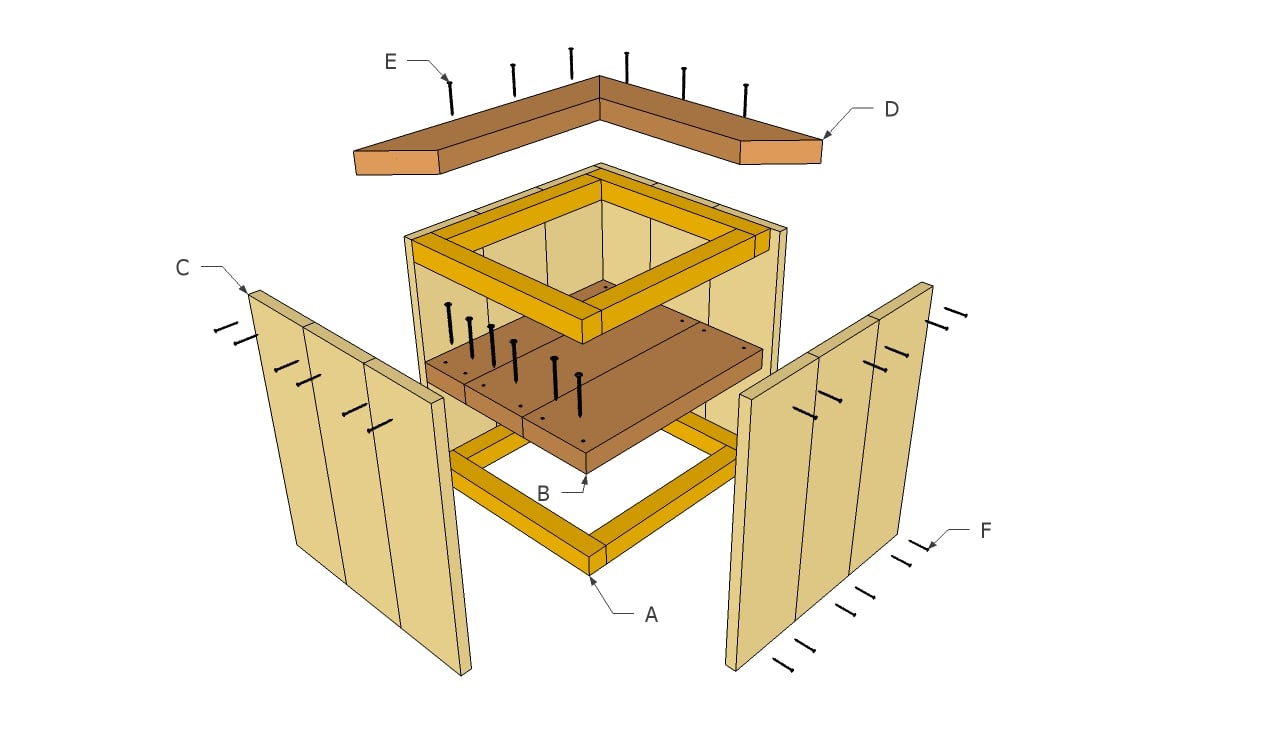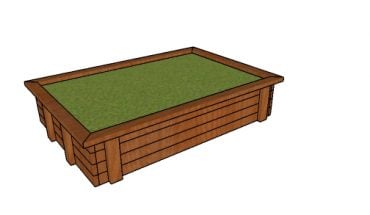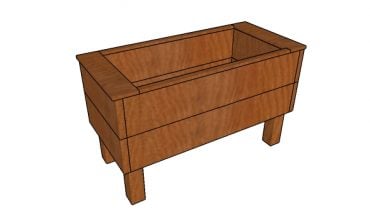This step by step diy woodworking project is about how to build a hexagon planter plans. A hexagon planter will enhance the look of any backyard, while keeping the costs under control. Adjust the size of the planter according to your needs and take a look over the related garden plans, as there are many projects that can enhance the look of your property.
Before starting the actual construction project, we recommend you to plan everything, as to save money and to keep the costs under control. Adjust the size and the design of the garden hexagon planter to suit your needs. In addition, we recommend you to invest in high-quality materials, such as pine, redwood or cedar, as they have a nice finish and are highly durable, especially in a humid environment.
It is essential to invest in high quality materials, that are also water-resistant, such as pressure-treated lumber. Cut the components at the right size by using a circular saw and smooth the cut edges with a sand block. Don’t forget to ask a skilled friend to assist you during the project, especially if you don’t have a large expertise in the field. You need someone to hold the components into place, while you drive the screws in. See all my Premium Plans in the Shop.
Made from this plan
Hexagonal planter plans
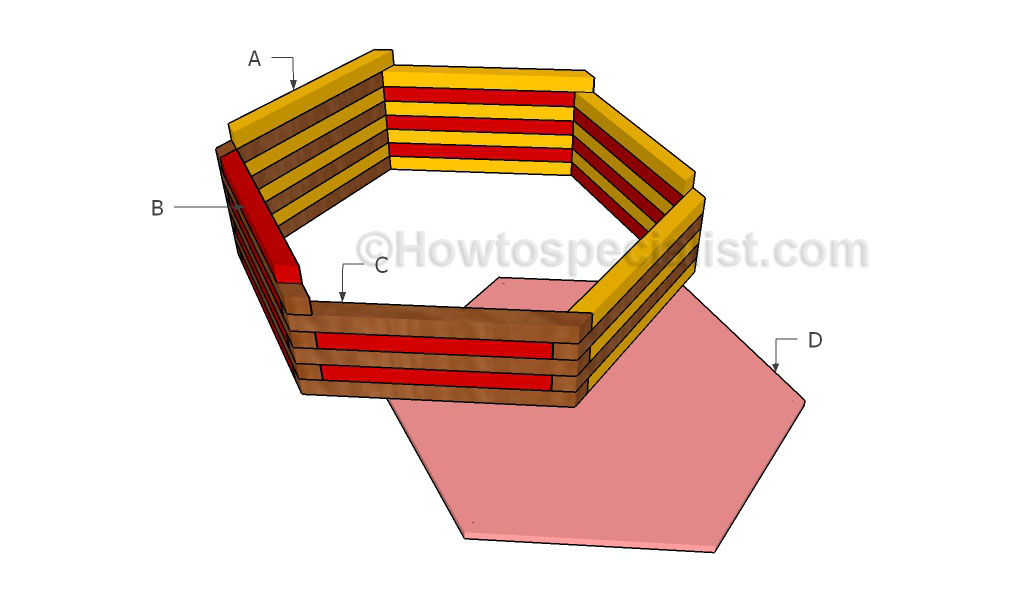
Building a hexagonal planter
Materials
- A – 16 pieces of 2×2 lumber – 20″ long COMPONENT
- B – 16 pieces of 2×2 lumber – 18 1/4″ long COMPONENT
- C – 16 pieces of 2×2 lumber – 21 3/4″ long COMPONENT
- D – 1 pieces of 3/4″ plywood – 33 3/4″x38 3/4″ long BOTTOM
Tools
- Safety gloves, glasses
- Miter saw, jigsaw
- Chalk line, tape measure, spirit level, carpentry pencil
- Drill machinery and drill bits
Tips
- Use a good miter saw to make the angle cuts
- Drill pilot holes before inserting the screws
Time
- One Week
Related
Building a hexagon planter
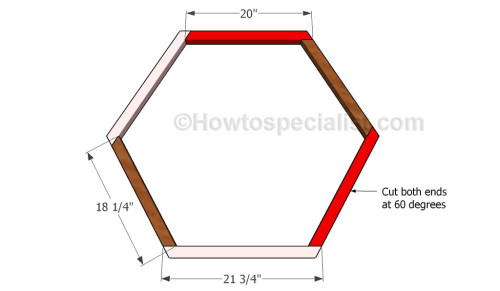
Building the first layer
The first step of the woodworking project is to build the first layer of the hexagon planter. As you can easily notice in the diagram, you need to build the components out of 2×2 lumber. Cut both ends at 60 degrees using a miter saw, making sure you mark the cut lines with attention. Drill pilot holes at both ends of the components and insert 2 1/2″ screws, as to create rigid frames.
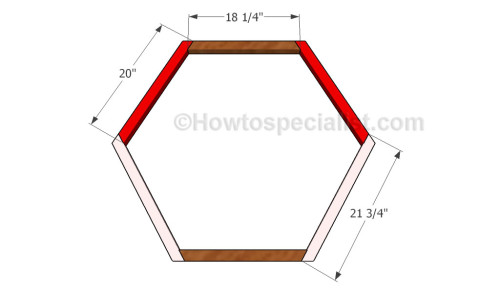
Building the second row
Build the next layer for the hexagon planter using the instruction described in the diagram. As you can easily notice in the diagram, you just need to turn the previous layer at 60 degrees. The components of the assemble are the same that can be found in the first layer. The only difference is the way you lay it out into place.
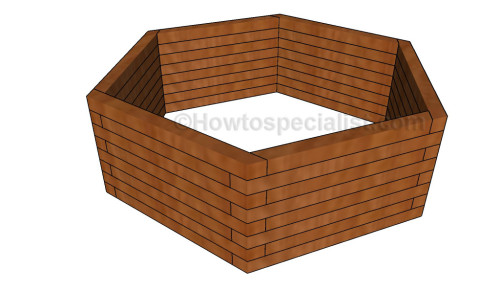
Asembling the planter
Align all the layers with great care, making sure the edges are perfectly flush. Leave no gaps between the components and lock them together using 2 1/2″ screws. Add glue to the joints and remove the excess with a damp cloth. The hexagon is modular, so you can add as many layers as you want.
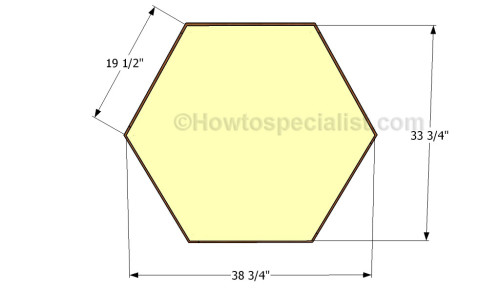
Attaching the bottom
One of the last step of the project is to fit the 3/4″ plywood to the bottom of the hexagon planter. Mark the cut lines on the plywood sheet and get the job done with a circular saw. Attach the component to the structure and lock it into place using 1 1/4″ screws. Leave no gaps between the components and drill a few drainage holes.
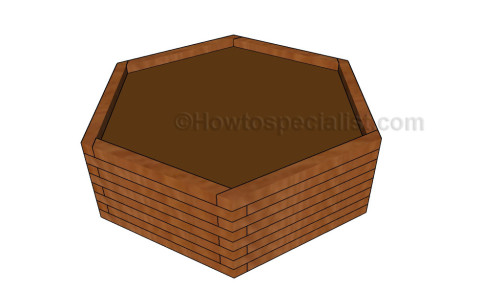
Hexagonal planter plans
Last but not least, we recommend you to take care of the finishing touches. Fill the holes with wood filler and let it to dry out for several hours. Check out the rest of the woodworking projects, to see more ways to improve the look of your garden.
Thank you for reading our project about hexagonal planter building plans and we recommend you to check out the rest of the projects. Don’t forget to share our projects with your friends and LIKE us, by using the social media widgets. SUNSCRIBE if you want to be the first that gets our latest articles.

